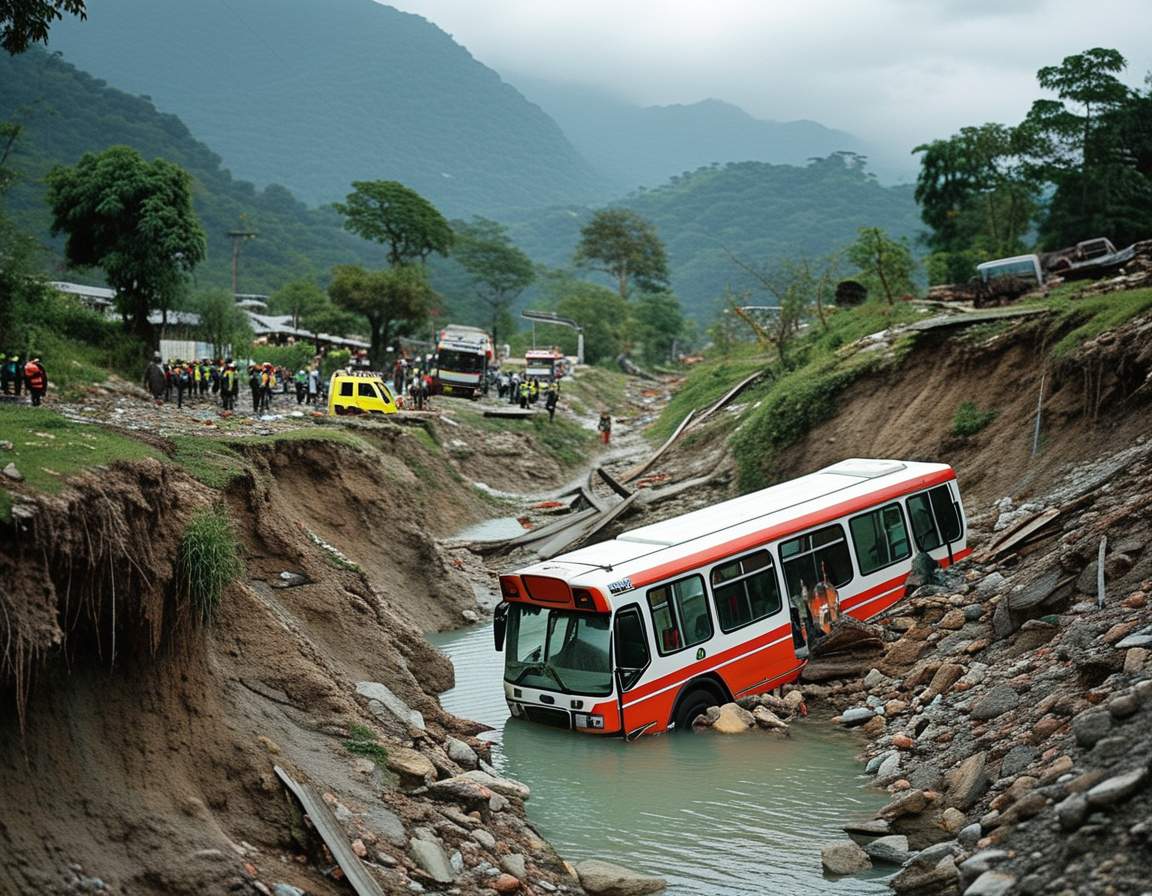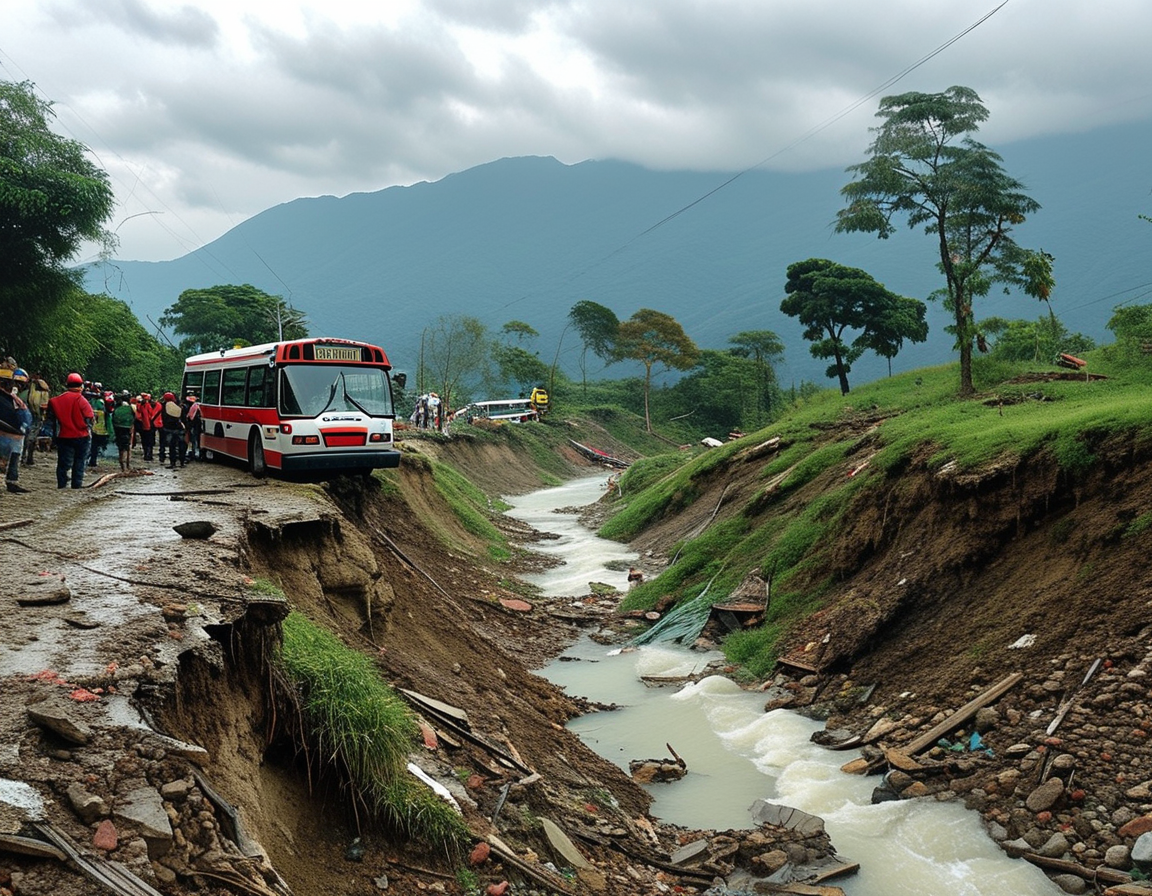Shock and Grief Over Fatal Bus Accident
At least 55 lives were claimed in a devastating bus accident in Guatemala City. The tragedy unfolded early Monday morning as a packed bus, carrying over 70 passengers, veered off a highway bridge. With a fall of nearly 20 meters, it plunged into a ravine filled with polluted water. The scene was harrowing, with first responders working to pull people from the wreckage. The images are shocking. They depict the bus partially submerged, surrounded by despair.
Fifty-three victims were found dead at the site. Two others succumbed later in the hospital. This is not just a statistic. Each number represents a life. Think about the families waking up to hear such heartbreaking news. “Their pain is my pain,” President Bernardo Arévalo expressed on social media. His words resonate deeply. Can we imagine the grief that permeates their homes today?
Details of the Tragic Incident
As details emerge, the circumstances surrounding the crash paint a worrying picture. The bus was reportedly 30 years old but still held a license to operate. What does this say about transportation safety standards in the region? An initial investigation revealed that the driver lost control of the vehicle, striking several small cars before breaking through a metal railing. It’s chilling to think about that moment—one wrong turn leading to disaster.
News reports indicate that the cause of the crash remains unknown. Questions linger in the air. Was the bus overloaded? What of its mechanical state? These concerns are vital, not just for families mourning lost ones but for the entire community. Ensuring road safety is a shared responsibility. Are we doing enough to protect those who rely on public transport?
The Aftermath: National Mourning
In response to the tragedy, President Arévalo declared three days of national mourning. The country’s army and disaster agencies have been deployed. They aim to assist in recovery efforts and support grieving loved ones. This significant response shows solidarity, yet it emphasizes the enormity of the loss.

As the recovery continues, authorities are left grappling with the harsh reality of tragic road incidents. Central and South America face a higher-than-average rate of such accidents. Why do road safety issues persist? What can be done to prevent further tragedies? Community and government action are crucial.
Reflection on Transportation Safety
This tragedy serves as a harsh reminder. Transportation systems need strict oversight. Aging vehicles draw concern, especially when lives are at stake. The accident in Guatemala touches on broader issues of modernization and accountability.
Have we become desensitized to road fatalities? As communities, we must demand change. Every incident should spark discussions on safety regulations, vehicle conditions, and accountability. These ongoing dilemmas should lead us to seek solutions.

When we read about such tragic events, let’s allow ourselves to feel. It matters. Our collective empathy can fuel awareness and inspire action. Together, perhaps we can push for a future where fewer families experience such devastating losses. In the meantime, we stand in solidarity with those impacted by this heartbreaking accident.




